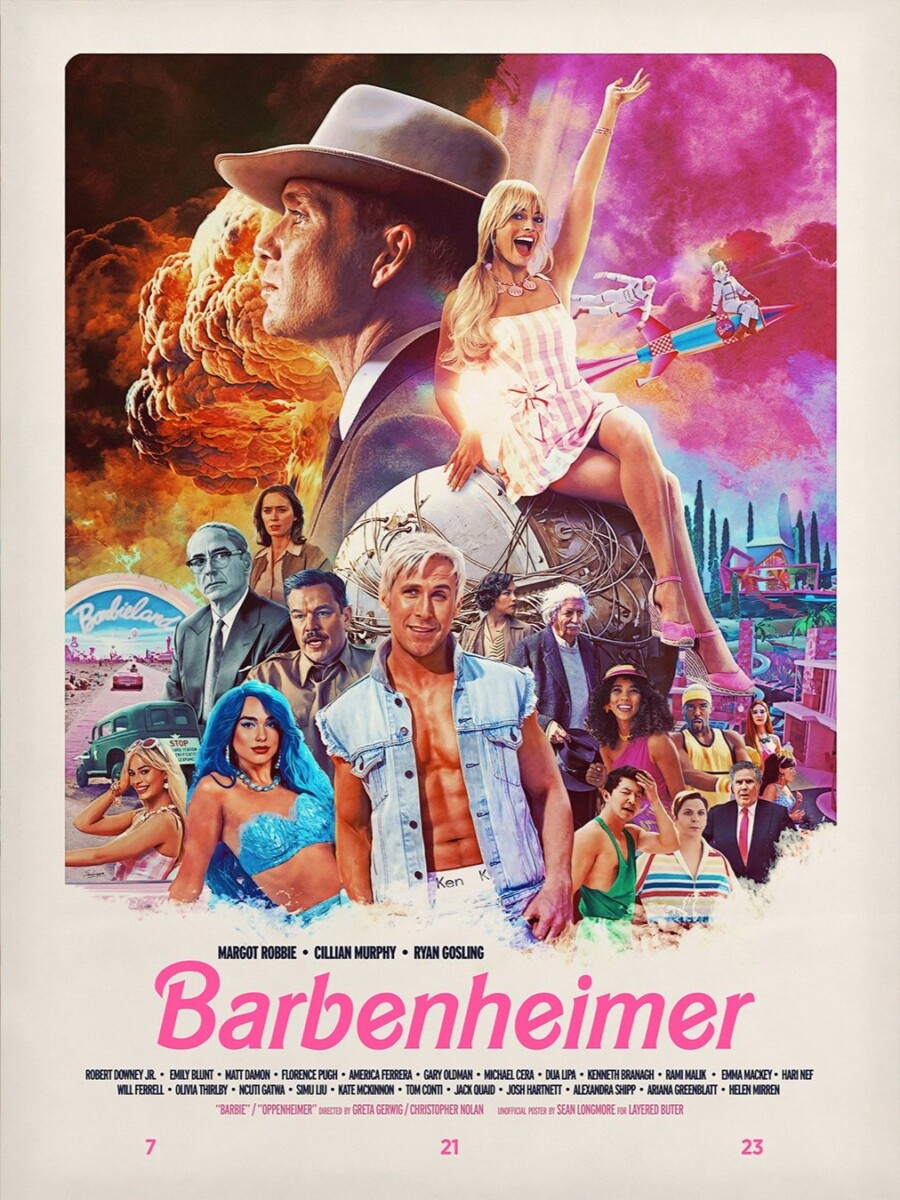Danielle O’Malley, Managing Editor
@domalley_
In the modern world of cinema, there are countless genres and themes that captivate audiences. Two very different films that have recently gathered attention are Greta Gerwig’s Barbie and Christopher Nolan’s Oppenheimer. Both highly successful, with Barbie racking in $1.427 billion globally and Oppenheimer bringing in $925.9 million, they could not be more different from one another. However, despite differing subject matters and target audiences, Barbie and Oppenheimer both bring unique charm to the big screen.
Barbie, the iconic fashion doll, has been a beloved figure in many children’s lives for decades. So, it was only a matter of time before she made her way to the silver screen. Barbie is a delightful exploration of the Barbie universe, filled with vibrant colors, catchy music, and the timeless message that you can be anything you want to be.
This film primarily targets a younger audience, providing them with a wholesome and imaginative experience. It is a celebration of friendship, creativity, and embracing one’s uniqueness. With stunning animation and a positive message, Barbie offers children a chance to escape into a world of wonder and possibility.
In stark contrast to Barbie, Oppenheimer delves deep into the annals of history. Directed by the iconic Christopher Nolan, this film is a biographical drama that explores the life of J. Robert Oppenheimer, the brilliant physicist who played a pivotal role in the development of the atomic bomb during World War II.
This movie is aimed at a more mature audience, providing a thought-provoking and intellectually stimulating experience. With Nolan’s signature storytelling techniques and a stellar cast, Oppenheimer paints a complex portrait of a man torn between his scientific genius and the moral dilemmas of unleashing destructive power. It raises profound questions about the consequences of scientific advancement and the responsibilities that come with it.
Despite their differences, Barbie and Oppenheimer exemplify the diversity of the modern world of film, each with its own unique appeal that serves a purpose in the world of storytelling.




